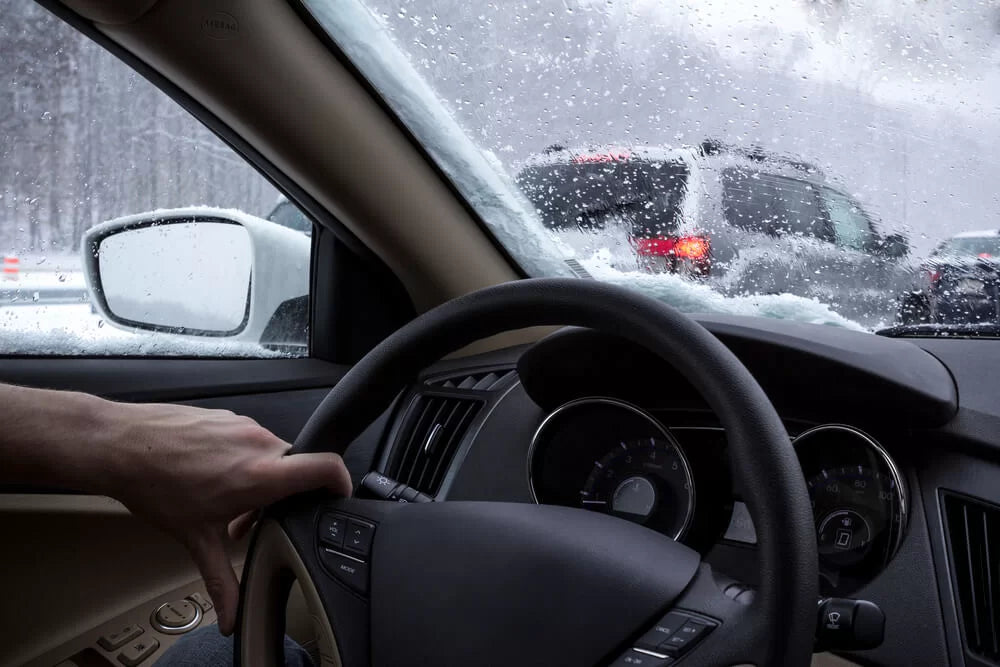Winter is fast approaching and the weather conditions are starting to deteriorate: cold, snow, ice, etc. Every winter, motorists seek to prepare as best they can in order to limit the risks while driving . Here are some tips on how to drive on snow in winter and what essential equipment you need to hit the road safely!
PREPARE YOUR VEHICLE AND TIRES PROPERLY
Before any departure, you must ensure that the visibility of the vehicle is optimal. When winter sets in, think carefully defrost and clear snow from your windows as well as your mirrors and lights. Remember to clear snow from your roof to avoid possible snowfall while driving or braking the vehicle.
When preparing your vehicle, you should also remember to defrost your windshield wipers by turning on the ventilation in the direction of the windshield.
Regarding your tires, be aware that when the temperature drops below 7°C, the rubber of summer tires hardens, thus causing a loss of grip. It is therefore recommended to have winter tires, or snow tires . Depending on your itineraries, it is also advisable to bring snow socks or snow chains . It is important to adjust tire pressure according to the manufacturer's recommendations.
Attention : if you decide to install snow tires, you must do so on all four wheels at a mechanic.
Finally, both summer and winter, pay attention to your load , your physical condition and your route that you will have prepared in advance so as not to be distracted on the road.
AT START-UP
Nowadays, many vehicles have driving aids. which can be very useful to make your driving easier. ESP (anti-skid) for example, allows you to correct the trajectory of the car when cornering and avoid skidding . However, it is a tool that can pose a problem when starting, especially on icy ground since it can block the wheels with its anti-slip function and prevent starting. To avoid this, it is advisable to deactivate ESP when starting the vehicle. This will help you move forward and give more power to the wheels. Once the car is running, you can activate ESP again.
ADAPTING YOUR DRIVING
Be aware that the braking distance on snow is multiplied by 4 ! You must therefore adapt your speed and your safety distance from other users. Avoid sudden movements as much as possible and try, where possible, to drive at low revs and shift gears as early as possible to reduce loss of grip.
MASTER BRAKING
Braking _ is undoubtedly one of the trickiest things to manage on snowy roads or on ice. Braking too suddenly could cause you to lose control of your vehicle. We must therefore look far ahead in order to anticipate make it easier to move on the road and when you need to brake, allowing you to stop smoothly without locking the wheels.
If you feel your car skidding or losing grip, do not brake . At low speed, disengage the clutch and slowly release the clutch once the car is stationary.
If you are going downhill, to limit your speed gain, use the Engine brake to slow down.
PUT ON CHAINS OR APPROVED EQUIPMENT
If you are driving on a very snowy road , you will need special equipment. These could be snow chains or snow socks . It is recommended to put them on when you feel a loss of grip. However, you shouldn't wait too long before putting them on, otherwise you risk finding yourself stuck in the snow.
These are useful and safe pieces of equipment . However, in the case of snow chains, they must be mounted on chaining areas and can only run on snow. This means that if part of the road is on dry asphalt, you will have to unchain your vehicle.
The other alternative is the snow sock, although simpler to install, it tends to tear easily on dry asphalt . Additionally, unlike snow chains, not all of them are permitted to be used on roads governed by sign B26.
In fact, certain roads require special equipment to drive, either winter tires and/or snow chains or other approved equipment . And good news! There is equipment approved for driving on snowy and icy surfaces as well as on dry bitumen , and on roads with a B26 sign and which, in addition, can be easily assembled in 5 minutes . These are the Musher anti-slip over-tyres ! These snow socks, more robust than classic snow socks, allow you to ride on dry ground for up to 150 km and on snowy roads up to 50 km/h .
And because progress never stops, Musher has designed a new anti-slip device which fully complies with the EN 16662-1:2020 standard allowing you to drive up to 150 km on dry asphalt. So you can travel along the snow-covered roads with peace of mind.
